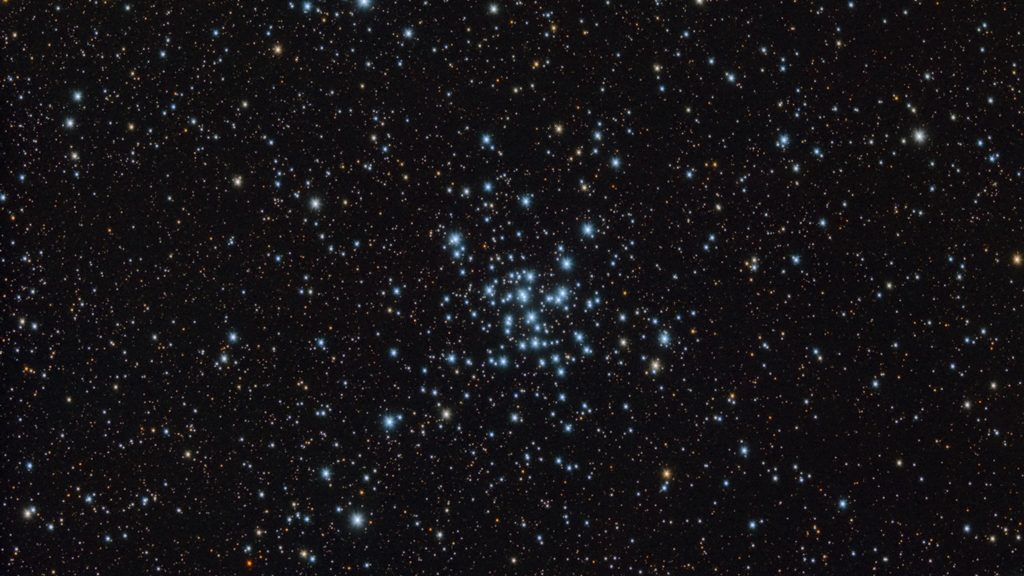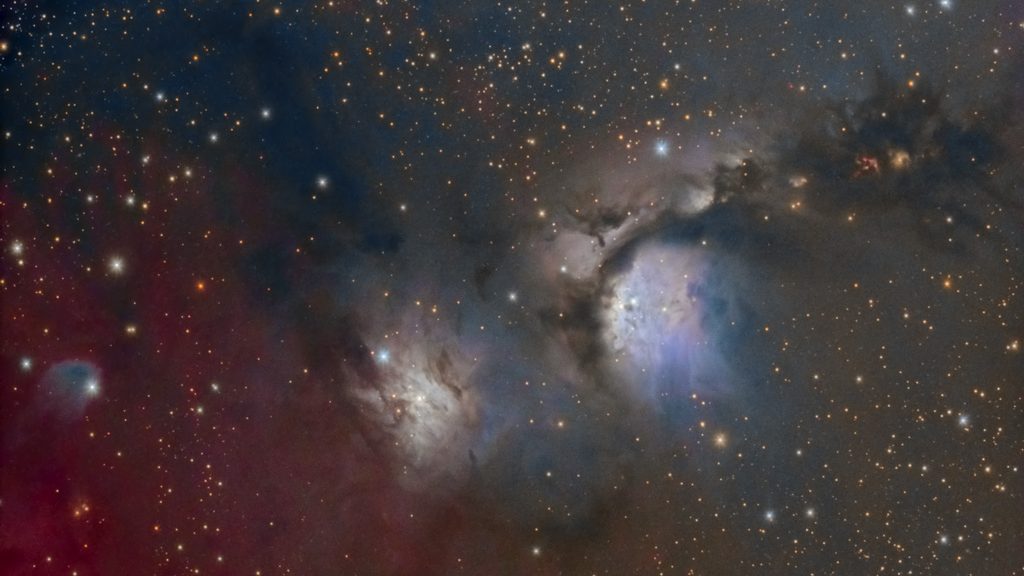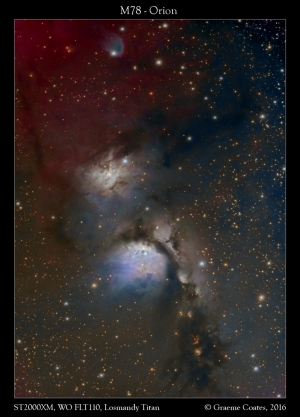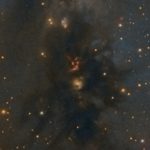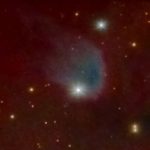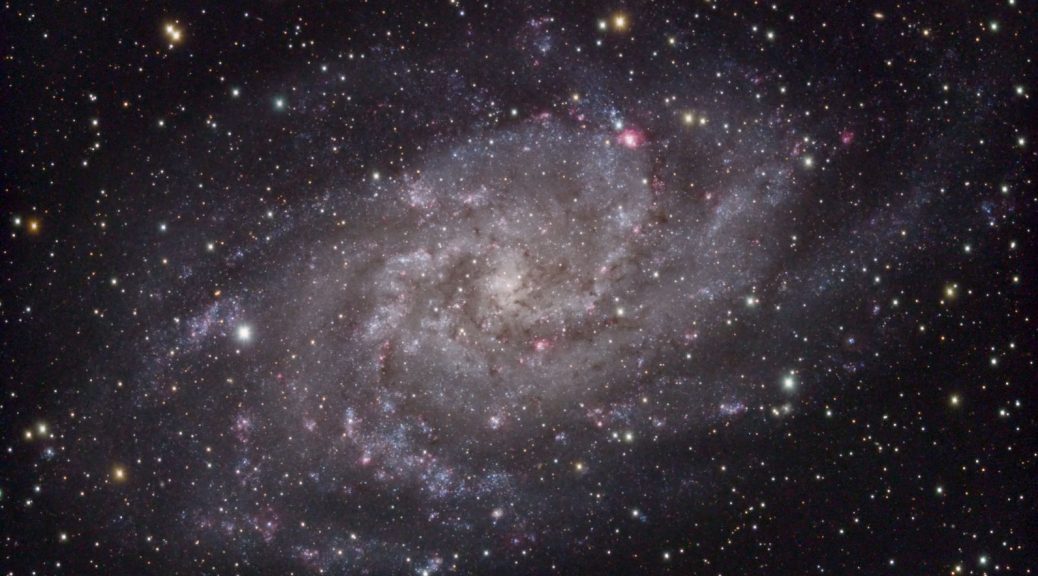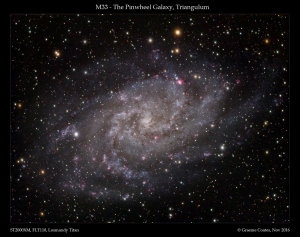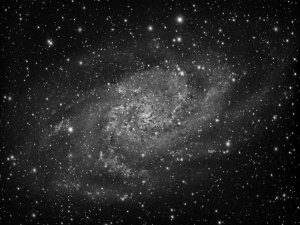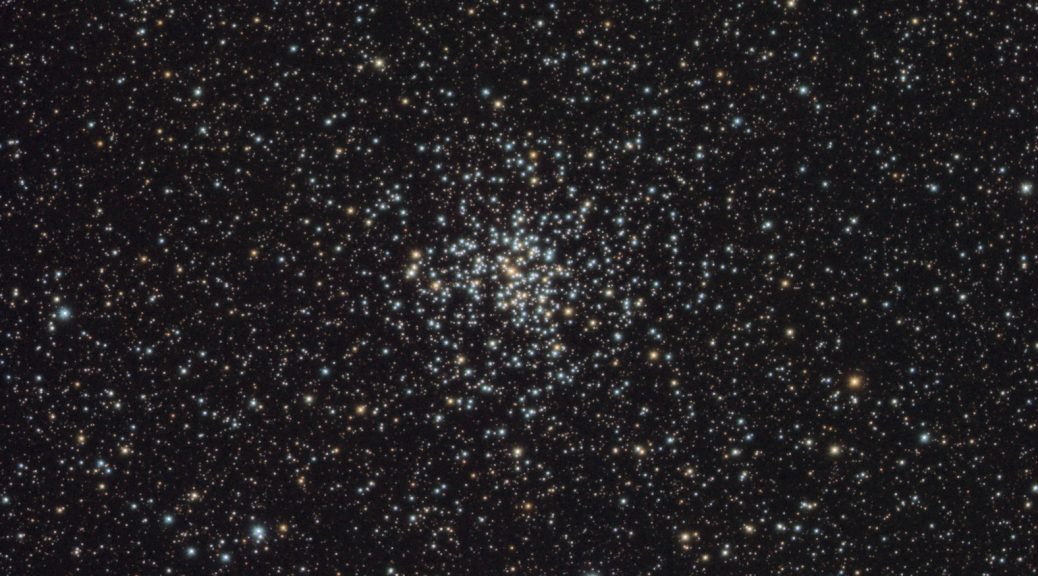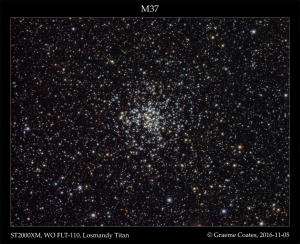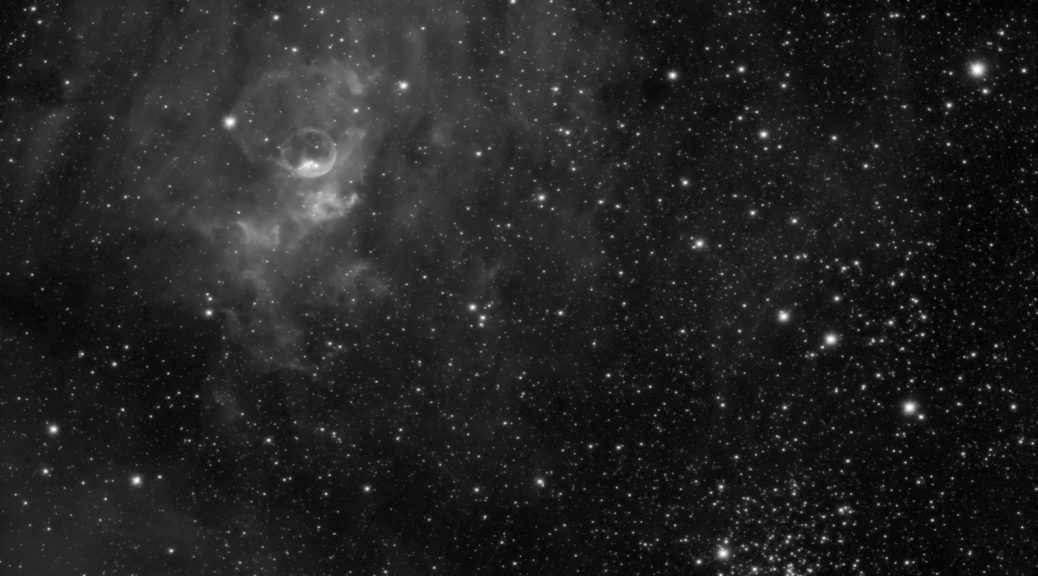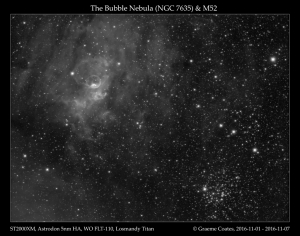Field Centred at:
RA: 05h 36m 25s
Dec: +34° 07′ 24″
Up is -89.8 degrees E of N
(Plate solve by nova.astrometry.net)
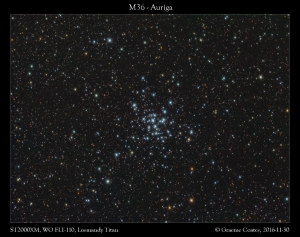 M36 is one of the three bright open clusters in Auriga. It was catalogued by Charles Messier on the night of 2nd Sept 1764, though it had been previously discovered at least 110 years prior to this by Italian astronomer Giovanni Batista Hodierna. Despite being one of the fainter open clusters in Messier’s catalogue (though M38, also in Auriga is the fainter of the three), it is visible with the naked eye from a dark site.
M36 is one of the three bright open clusters in Auriga. It was catalogued by Charles Messier on the night of 2nd Sept 1764, though it had been previously discovered at least 110 years prior to this by Italian astronomer Giovanni Batista Hodierna. Despite being one of the fainter open clusters in Messier’s catalogue (though M38, also in Auriga is the fainter of the three), it is visible with the naked eye from a dark site.
There are about 60 stars in the cluster itself at a distance of about 4100 light years. It is very similar in extent to the Pleiades, and if it was at the same distance, it would likely appear just as bright!
In this image to the lower left (south west – north is to the right here) there is the deep red variable star OW Aur. This is another carbon star, similar to V358 Aur as imaged near to M37.
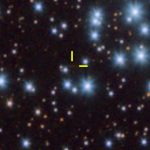
Also of note in the object, though only just visible at this scale (shown at 200% scale on left) is an enigmatic object with the name “Holoea” – this is an object that has a tail like structure with high velocity outflows, and is likely to be a young stellar object. Details on the discovery and analysis of this object can be found at 1996A&A…305..936M (Magnier, E. A.; Waters, L. B. F. M.; Kuan, Y.-J.; Chu, Y.-H.; Taylor, A. R.; Matthews, H. E.; Martin, E. L.)
The data presented here was taken on the evening of 30th Nov 2016 as an opportune target while waiting for another object to be in a favourable position. As such, exposures were fairly short, totalling 45:40:40 R:G:B (all unbinned, 5min sub exposures). Reduction/processing was performed in Pixinsight with final tweaks in Photoshop. During processing in PI, I generated a pseudo-Luminance frame from the combined RGB data and then merged this back to form the LRGB image shown.
